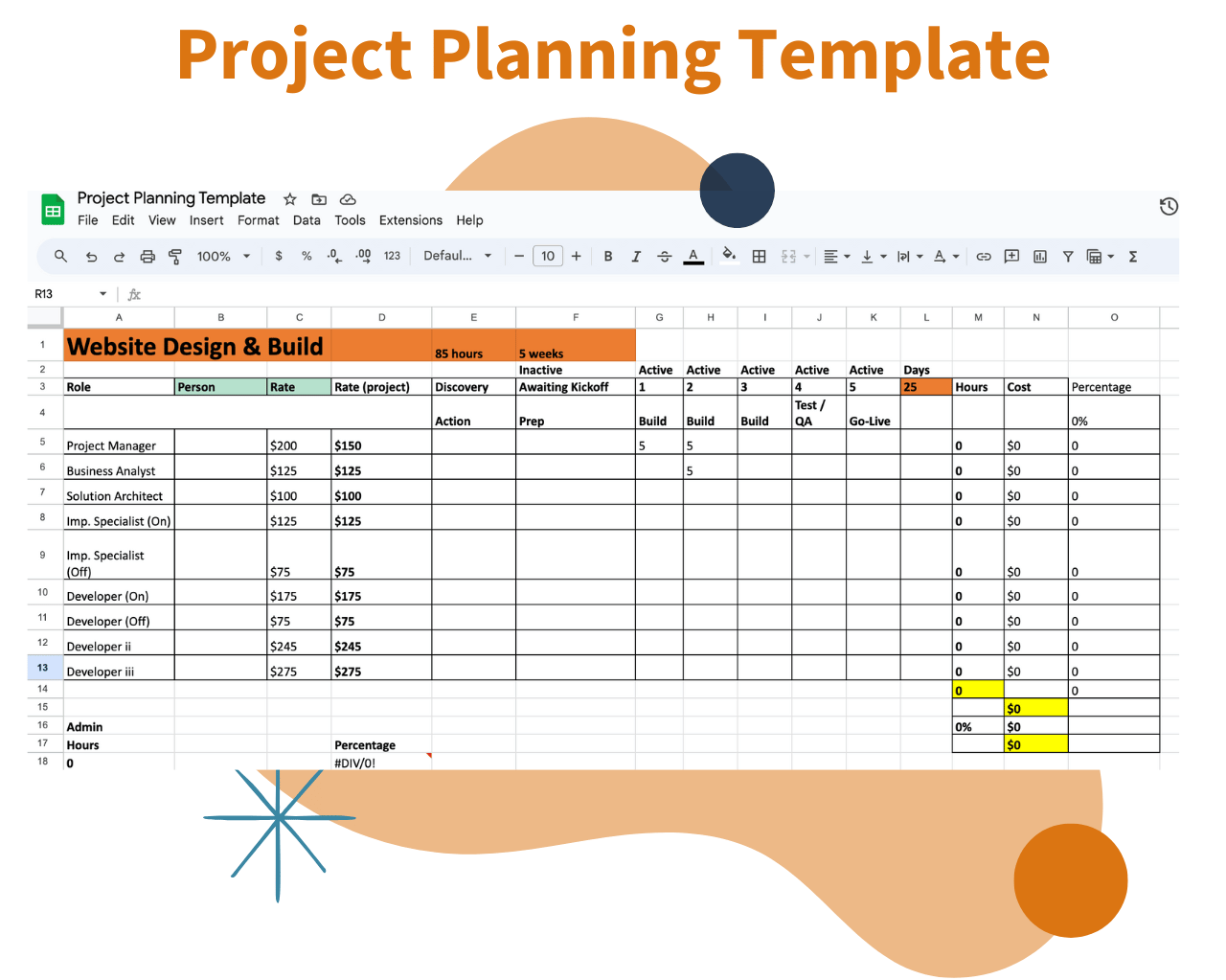Introduction
Whether you’re a seasoned project manager or a newcomer to this essential aspect of project management, this comprehensive and easy to follow guide will help you grasp the key concepts and unlock the benefits of effective planning.
Understanding Project Planning and Resource Allocation
Project and resource planning is crucial to any growing business. It performs three crucial and easy to organize functions:
- Organize resources efficiently and visually to execute a project
- Determines accurate budgets for each project and client account
- Establishes a well-structured timelines for on-time project delivery
The subsequent benefits for your business are equally distinct and hugely important:
- Gain real-time insights into project profitability and margins
- Prevent employee burnout by optimizing and managing work hours effectively
- Establish repeatable project and resource processes for consistent success
Project and Resource Planning: How to Start
Use your project template and start resource planning!
You can download our project planning excel template here to use as an example and make your own. In our example, we assign people and positions but you may choose to do one or the other.
First, instead of breaking down hours by day, it’s much simpler to understand and allocate them on a weekly basis. This way, it becomes easier to visualize the right individuals, positions, and skills needed for a project.
Second, our goal is to achieve the right balance between administrative and creative / development hours for each project.
Let’s say a project takes 50 hours to design, develop, and deploy over 5 weeks. In addition to this development time, you’ll also require hours for creative meetings, client meetings, and progress reports. As a result, the total time spent on the project goes well beyond the initial 50 hours dedicated to development.
The outcome of this approach is a well-organized distribution of hours, ensuring that we have the appropriate skills and budget in place to deliver successful projects to our clients while achieving our margin and profit targets.
In project planning, we account for various factors, including project management time, project planning, and general administration, as these are essential aspects of any project that need to be considered.
Using the Project and Resource Planning Template: Become an Expert
Building a repeatable and successful process
Kickstart your journey with project planning and resource allocation by following these five straightforward steps:
- Define Deliverables: Clearly outline the tasks and deliverables for each project.
- Estimate Task Hours: Accurately assess the time required to complete each deliverable.
- Plan for Meetings and Management: Allocate time for internal planning and client interactions.
- Utilize Project Management Templates: Leverage pre-designed templates to organize tasks and resources efficiently.
- Balance Administrative and Development Hours: Ensure a proper distribution of time for both project execution and administrative tasks.
The Result: A well-crafted project plan with optimal resource allocation and a clearly defined budget to achieve your profit and deliver success to your clients!
Real-world Project Planning Example
Successfully build a project and resource plan
Let’s explore a practical example of project planning and resource allocation for an experienced ecommerce website company.*
*Note: Whether you’re in law, design, marketing, or software development, the principles and desired outcomes remain the same. Customize the template to align with your unique business requirements and key data points.
Example Company: An Ecommerce website developer with 10 years experience.
- Deliverables / Client: Create an ecommerce website with integrations into the clients marketing program and CRM tool.
- Development Hours:
- Ecommerce Site: 50 hours of development
- Standard 50 hours – ecommerce sites are our bread and butter
- Integrations: 10 hours per integration
- Marketing tool: Add 5 hours because we have not integrated into this tool before
- CRM tool: Standard 10 hours (we have done this before)
- We will have 2 developers and 1 designer on the project = 5 week project
- Total Development time = 75 hours
- Ecommerce Site: 50 hours of development
- Management Hours:
- Planning: Add 10 hours of research and project planning for the new integration before kickoff call with client
- Typical Meeting time per week is 2 hours
- Total planning hours = 20 hours + 10 hours for research
- Distribution:
- Admin Hours = 50 hours / 36%
- Development Hours = 75 / 64%
- New client: Add 10% buffer because of it being a new client and a new integration
- Buffer Hours = 12 hours
- Cost
- $22,570
- Cost with Buffer: $24,827
By now, you understand the vital role of project planning and resource allocation in running a successful business. Following the outlined steps and incorporating project management templates will empower you to build well-organized project plans and achieve your profit and margin goals.
Tailor your approach to suit your unique business needs and add your perspective for optimal outcomes!
We are always available for any questions you may have regarding best practices for your organization and are happy to be a sounding board! Feel free to reach out through our contact form, or directly via the contact information below:
Timothy Schmitt
Director of Sales | Dinvy, LLC
tim.schmitt @dinvy.com | 414.313.0601
Timothy is a fanatic of all things process related and passionate about problem solving. He takes great pride in helping others hone in on their pain points and delivering solutions that result in greater profitability and operational efficiency.


